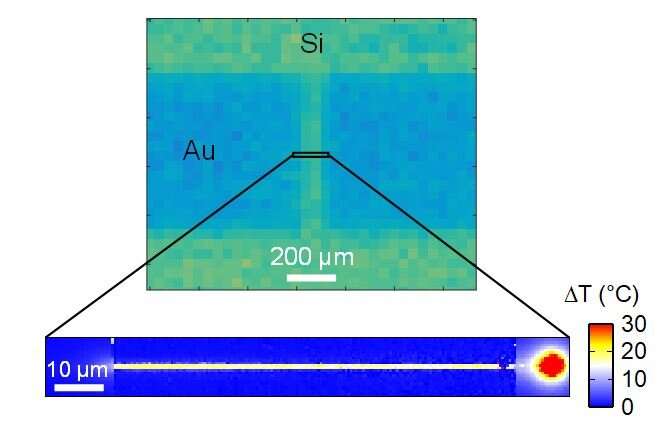Chemical thermometers take temperature to the nanometric scale

The miniaturization of electronic components coupled with their increasing integration density has considerably expanded heat flows, which can lead to overheating. But measuring these nanometric events is difficult because conventional solutions such as infrared thermography do not work below the scale of a micrometer.
A research team of scientists from two CNRS laboratories, the Coordination Chemistry Laboratory and the Laboratory for Analysis and Architecture of Systems, has proposed conducting measurements by using the bistability properties of a family of chemical compounds known as spin-crossover (SCO) molecules. They exist into two electronic states with different physical properties, and can switch from one to the other when they absorb or lose energy. For instance, some of them change color depending on the temperature.
Once deposited in the form of a film on an electronic component, the optical properties of SCO molecules change depending on the temperature, enabling this chemical thermometer to establish a nanometric-scale thermal map of the surface of microelectronic circuits. However, the primary feature of these SCO molecular films is actually their unique stability: The properties of the molecules remain unchanged, even after more than 10 million thermal cycles under ambient air and high temperatures (up to 230 degrees C).
This innovation overcomes the primary hurdle for SCO molecules, namely their fatigability, or the fact that their properties are often altered after multiple transitions from one electronic state to another. It could soon be used in the microelectronics industry to probe local thermal processes, and to thereby improve the design of future devices.
More information: Ridier et al., Unprecedented switching endurance affords for high-resolution surface temperature mapping using a spin-crossover film. Nature Communications (2020). DOI: 10.1038/s41467-020-17362-7
Journal information: Nature Communications
Provided by CNRS



















